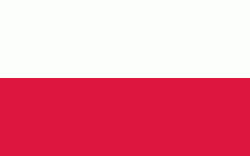Rzeszów
 |
 |
The history of Rzeszów dates back to the Middle Ages. It received city rights and privileges from King Casimir III the Great in 1354. Local trade routes connecting Europe with the Middle East and the Ottoman Empire resulted in the city's early prosperity and development. In the 16th century, Rzeszów had a connection with Gdańsk and the Baltic Sea. It also experienced growth in commerce and craftsmanship, especially under local rulers and noblemen. Following the Partitions of Poland, Rzeszów was annexed by the Austrian Empire and did not regain its position until it returned to Poland after World War I.
Rzeszów has found its place in the group of the most elite cities in Poland, with growing number of investments, rapid progress and a very high standard of living. In 2011 Forbes awarded Rzeszów with the second place in the ranking of the most attractive semi-large cities for business. Moreover, the city is home to a number of higher education schools and foreign consulates. Rzeszów is also developing as a regional tourist destination; its Old Town, Main Market Square, churches and synagogues are among the best preserved in the country.
In recent years, the population of Rzeszów has grown from 159,000 (2005) to over 196,000 (2019). Further plans for extending the city's borders include incorporating surrounding counties to strengthen its function as a metropolitan center in southeastern Poland. Rzeszów is served by an international airport and is a member of Eurocities.
In the area of Rzeszów, the first early European modern humans appeared in the late Paleolithic Age; archaeologists have excavated a tool made in that period at site Rzeszów 25. In the mid-6th century BC, the first farmers came to the area of the city, most likely through the Moravian Gate. Later on, Rzeszów was a settlement of the Lusatian culture, which was followed by the Przeworsk culture.
In the 5th century, the first Slavs appeared in the area, which is confirmed by numerous archaeological findings. Most probably, Rzeszów was then inhabited by the Vistulans. In the 10th century, it became part of the emerging Duchy of Poland. Sometime between 11th and 13th century the town was conquered and subsequently annexed by the East Slavic Ruthenians from the weakened and fragmented Polish state (see Testament of Bolesław III Wrymouth).
Polish rulers of the Piast dynasty recaptured Rzeszów in 1264. In Tarnów, there was a meeting of Prince Bolesław V the Chaste, and Prince Daniel of Kingdom of Galicia–Volhynia, during which both sides agreed that the border would go between Rzeszów and Czudec (Rzeszów belonged to Kingdom of Galicia–Volhynia, while Czudec and Strzyżów to Lesser Poland).
After the reunification of Poland following the fragmentation period, Rzeszów remained in Ruthenian hands until 1340, when King Casimir III the Great eventually recaptured the area, inviting his knights to govern the re-acquired land. According to some sources, at that time Rzeszów was inhabited by the Walddeutsche, and was called Rishof (during World War II, the Germans renamed it Reichshof). The town was granted Magdeburg rights, it had a parish church, a market place and a cemetery, and its total area was some 1,5 km2. Magdeburg rights granted Rzeszów's local authorities the permission to punish criminals, build fortifications and tax merchants.
In 1458 Rzeszów was burned by the Vlachs and the Tatars. In 1502 the Tatars destroyed it again. Earlier, in 1427, Rzeszów had burned to the ground in a big fire, but the town recovered after these events, thanks to its favorable location on the main West – East (Kraków – Lwów) and North – South (Lublin – Slovakia) trade routes. In the 15th century the first Jews settled in Rzeszów.
The 16th century was the time of prosperity for the town, especially when Rzeszów belonged to Mikołaj Spytek Ligęza (since the 1580s), who invested in infrastructure, building a castle, a Bernardine church and a monastery. Rzeszów then had some 2,500 inhabitants, with a rapidly growing Jewish community. The town was granted several royal rights, including the privilege to organise several markets a year. At that time, Rzeszów finally grew beyond its medieval borders, marked by fortifications.
Map - Rzeszów
Map
Country - Poland
 |
 |
| Flag of Poland | |
Poland has a temperate transitional climate and its territory traverses the Central European Plain, extending from Baltic Sea in the north to Sudeten and Carpathian Mountains in the south. The longest Polish river is the Vistula, and Poland's highest point is Mount Rysy, situated in the Tatra mountain range of the Carpathians. The country is bordered by Lithuania and Russia to the northeast, Belarus and Ukraine to the east, Slovakia and the Czech Republic to the south, and Germany to the west. It also shares maritime boundaries with Denmark and Sweden.
Currency / Language
| ISO | Currency | Symbol | Significant figures |
|---|---|---|---|
| PLN | Polish złoty | zÅ‚ | 2 |
| ISO | Language |
|---|---|
| PL | Polish language |
















